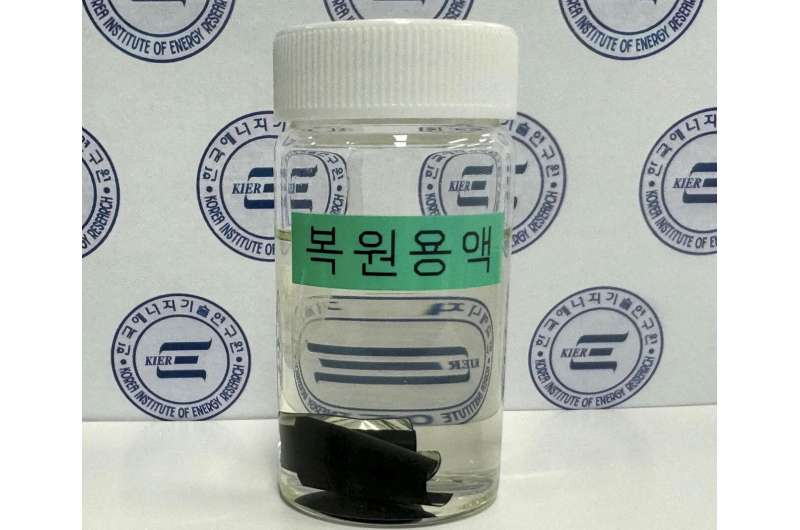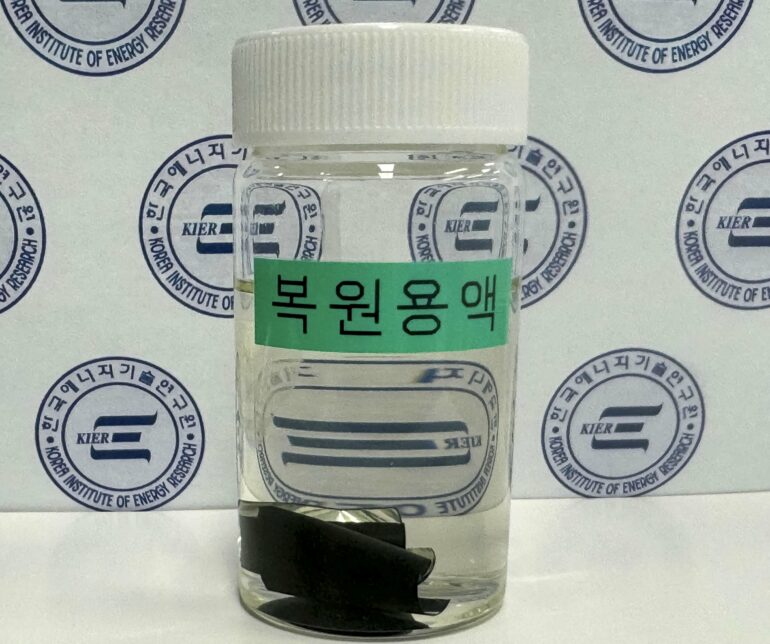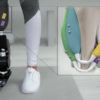A research team has successfully developed a cost-effective and eco-friendly technology for recycling cathode materials from spent lithium-ion batteries. The findings are published in the journal Advanced Energy Materials.
With the recent rise in electric vehicles and mobile devices, managing spent batteries has become a critical global challenge. By 2040, the number of decommissioned electric vehicles is expected to exceed 40 million, leading to a sharp increase in waste batteries. Developing advanced recycling technologies has thus become an urgent priority, as the metals in batteries pose a significant risk of soil and water contamination.
In conventional battery recycling, the typical method involves crushing spent batteries and extracting valuable metals such as lithium, nickel, and cobalt through chemical processes. However, this process requires high-concentration chemicals, which generate wastewater, and it demands substantial energy consumption due to the need for high-temperature furnaces that contribute significantly to carbon dioxide emissions.
To address these issues, direct recycling technology, which recovers and restores original materials without chemical alteration, has been attracting growing interest. However, direct recycling also has drawbacks, as it requires high-temperature and high-pressure conditions and involves complex procedures, making it both time-consuming and costly.
The research team has developed a novel technology for directly recycling spent cathode materials from lithium-ion batteries through a simple process that addresses the limitations of conventional recycling methods. This innovative approach restores the spent cathode to its original state by immersing it in a restoration solution under ambient temperature and pressure, effectively replenishing lithium ions.
The key technology is the application of galvanic corrosion using a restoration solution. Galvanic corrosion occurs when two dissimilar materials are in contact within an electrolyte environment, leading to the selective corrosion of one metal to protect the other. By utilizing this sacrificial mechanism, the research team has innovatively adapted this phenomenon for application in battery recycling.

Spent cathode material immersed in restorative solution. © Korea Institute Of Energy Research
The bromine in the restoration solution initiates spontaneous corrosion upon contact with the aluminum in the spent battery. During this process, electrons are released from the corroded aluminum and subsequently transferred to the spent cathode material.
To maintain charge neutrality, lithium ions in the restoration solution are inserted into the cathode material. This recovery of lithium ions restores the cathode material to its original state.
Additionally, unlike conventional methods that require disassembly of the spent battery, the restoration reaction takes place directly within the cell, significantly enhancing the efficiency of the recycling process.
The research team confirmed through electrochemical performance testing that the restored cathode achieved a capacity equivalent to that of new materials.
Dr. Jung-Je Woo, the senior researcher, stated, “This research introduces a novel approach to restoring spent cathode materials without the need for high-temperature heat treatment or harmful chemicals. The direct recycling of discarded electric vehicle batteries holds great potential for significantly reducing carbon emissions and establishing a circular resource economy.”
The team was led by Dr. Woo at the Gwangju Clean Energy Research Center of the Korea Institute of Energy Research (KIER).
More information:
Jinju Song et al, Reviving Spent NCM Cathodes via Spontaneous Galvanic Corrosion in Ambient Atmospheric Condition, Advanced Energy Materials (2024). DOI: 10.1002/aenm.202402106
Provided by
National Research Council of Science and Technology
Citation:
Advanced recycling process restores spent battery cathode materials to nearly pristine state (2024, November 13)



